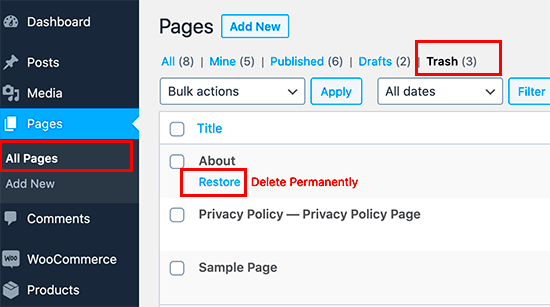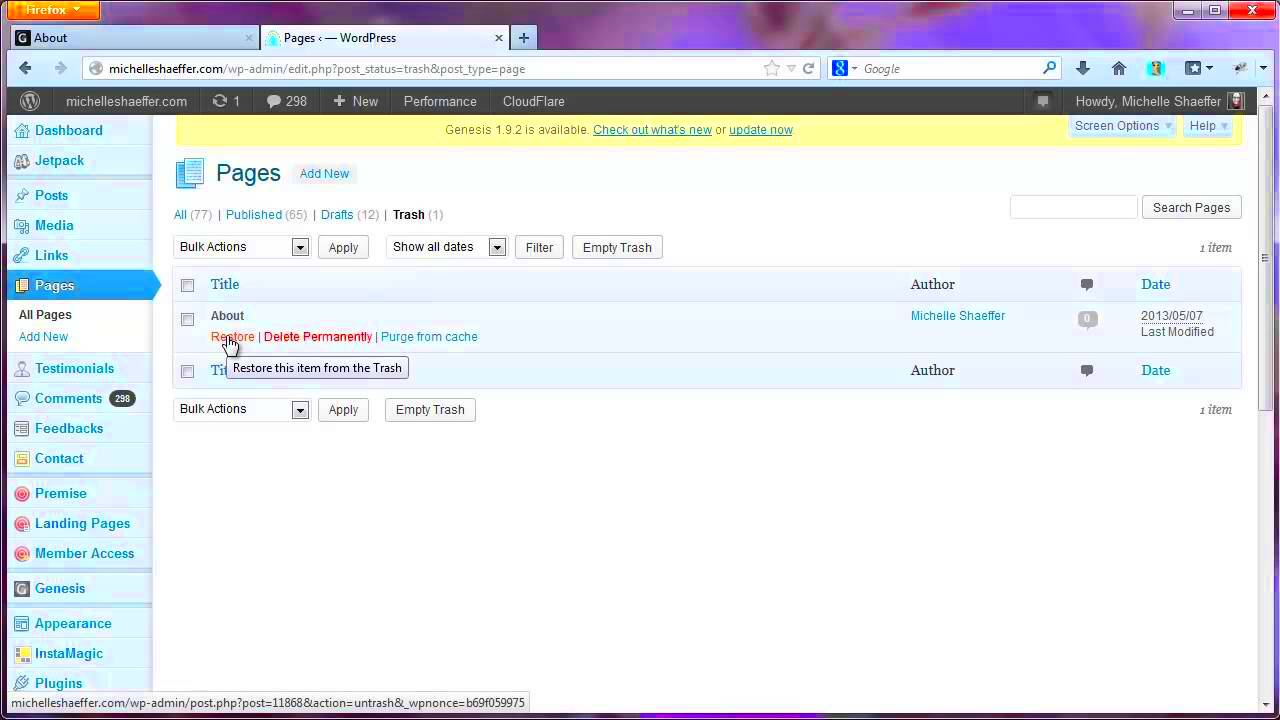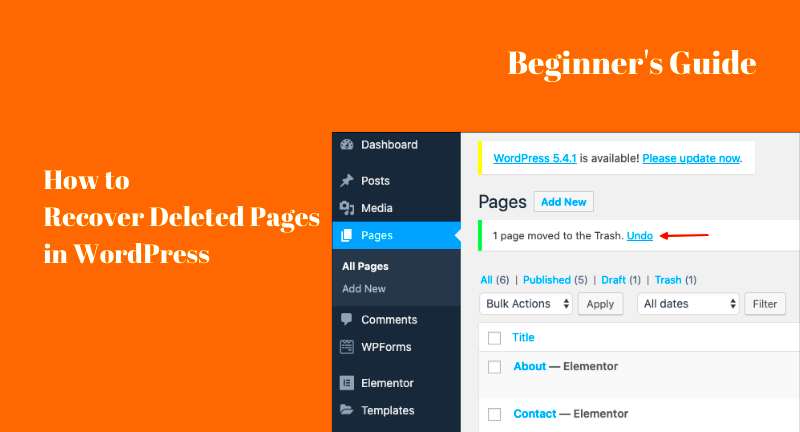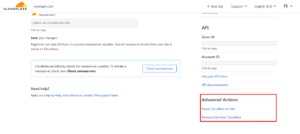We’ve all been there—working hard on a WordPress page only to realize that we’ve made a mistake or lost a significant chunk of our work. It’s *frustrating*, right? If you’ve ever been frustrated by a missing page history in WordPress, you’re not alone. In this post, we’ll explore how to recover that elusive page history and why it’s crucial for your website. So, grab a cup of coffee, and let’s dive into the world of
Understanding the Importance of Page History

Page history in WordPress is one of those unsung heroes that often gets taken for granted—until you lose it. But why is it so important? Let’s break it down.
- Backup and Recovery: Page history allows you to revert to earlier versions of your content. If you accidentally delete vital information or mess up formatting, you can quickly restore the page to its former glory.
- Track Changes: Just like in collaborative projects, knowing who made what changes can be essential. This feature helps you keep track of edits made by multiple users, so you can identify the source of any issues.
- Quality Control: Having access to previous versions means you can improve content quality over time. You can test different styles, headlines, or formats and keep the best ones for your visitors.
- SEO Benefits: Sometimes, a regression to an older version can help recover lost SEO ranking elements. If a new change negatively impacts your page’s performance, you can revert to an older version that worked better.
In a nutshell, page history is your safety net in WordPress. It’s not just about keeping tabs on what you’ve done; it’s about having control over your content. And who wouldn’t want that? So, let’s move on to understanding how to recover that page history when it goes missing!
Common Reasons for Missing Page History

Have you ever found yourself scratching your head over a missing page history in WordPress? You’re not alone! Many WordPress users face this issue, and understanding the common culprits can help you prevent it from happening again. Let’s dive into some of the primary reasons why your page history might be missing.
- Post Revisions Disabled: Sometimes, users or developers disable post revisions to save database space. This means that WordPress won’t keep a history of your changes, leading to a complete absence of page history.
- Database Corruption: If your database has become corrupted, it could affect how WordPress stores or retrieves data, including page history. Corrupted tables may cause significant issues, resulting in lost information.
- Plugin Conflicts: Not all plugins play nicely together. A conflicting plugin could interfere with the way WordPress manages its post revisions, causing your history to disappear. It’s essential to identify and troubleshoot these issues.
- Theme Issues: Similar to plugins, poorly coded themes may also disrupt the page history functionality. If your theme has issues, they can lead to missing revisions or other problems.
- Server Issues: Occasionally, server-related problems, like unexpected crashes or downtime, can cause data loss, including missed page histories. Regular backups can save you from these all-too-common mishaps.
By being aware of these common reasons, you can take proactive steps to safeguard your page history and ensure you can recover lost content in the future!
How to Check If Page History Is Available

So, you suspect that your page history might be missing. The good news? There are simple ways to check if it’s available! Here’s how you can do it:
- Access the WordPress Editor: Navigate to the page or post in your WordPress dashboard. Click on the page you want to check and enter the WordPress editor.
- Look for the Revisions Section: In the editor screen, locate the “Revisions” area. This can usually be found in the Document tab on the right sidebar, under the Status & Visibility section.
- Check the Number of Revisions: If revisions are enabled, you should see a note like “This post has X revisions.” Click on ‘Browse’ to view the available revisions.
- Use the Revision Browser: The revision browser lets you compare different versions of your post. You can see what changes were made and when, allowing you to restore a previous version if needed.
- Review the Autosaves: In the same area, check for any autosaves. Sometimes, even if the page history isn’t available, autosaved drafts can give you valuable content back.
Following these steps should help you determine whether your page history is there or not. And if it’s missing, you’ll know what to look into for a potential recovery!
Methods to Recover Missing Page History
When you find yourself dealing with a missing page history in WordPress, don’t panic! There are several methods you can employ to recover that lost content. Let’s dive into a few effective techniques:
- Check the Revisions: WordPress automatically saves revisions of your posts and pages. To access them, go to the page or post in question and look for the ‘Revisions’ link. This will allow you to view previous versions and restore your content from there.
- Restore from a Backup: If you have a regular backup routine (which you should!), restoring from a backup file may be your best option. Use your hosting provider’s backup services or plugins like UpdraftPlus to retrieve your missing page history.
- Use the WordPress Database: If you’re comfortable with databases, you can manually check the WordPress database using phpMyAdmin. Look for the `wp_posts` table and see if you can find the old revisions there. Be careful with this method, though; any wrong changes can cause more issues.
- Browser Cache: Sometimes, your browser might just have a stored version of the page. Try checking your browser’s cache or even Google’s cache by searching for the page title and clicking on the cached version link.
- Ask Your Hosting Provider: If you’ve exhausted your options, reach out to your hosting provider. They may have backups or additional tools to help restore your page history.
Each of these methods has its strengths and can be used based on your comfort level and the specific situation you’re facing. Always make a habit of creating regular backups to minimize future risks!
Using Plugins to Restore Page History
If the built-in options aren’t cutting it for you, fear not! There are various plugins designed specifically to help restore missing page history in WordPress. Let’s explore a few popular ones:
| Plugin Name | Features | Ease of Use |
|---|---|---|
| WP Rollback | Restores previous versions of plugins and themes, providing a quick fix if updates break your site. | Very easy; just click the rollback link next to the plugin or theme. |
| UpdraftPlus | A complete backup and restoration plugin that allows you to restore specific files or entire backups with ease. | User-friendly interface that guides you through the backup or restore process. |
| WP Database Backup | Offers automatic database backups and allows you to restore lost data efficiently. | Simple setup and use, ideal for beginners. |
Installing these plugins is typically straightforward. Just go to your WordPress dashboard, navigate to Plugins, then Add New, and search for the desired plugin. Once installed, follow the prompts to back up or restore your content.
Utilizing plugins for restoration can significantly simplify the process, letting you focus on crafting engaging content instead of worrying about lost data.
Checking Backup Options for your WordPress Site
When it comes to managing a WordPress site, having a backup strategy is essential. If you’ve ever lost content due to a missing page history, you know how crucial it is to have a reliable backup option in place. So, let’s dive into how you can check and utilize backup options to safeguard your site’s content.
Firstly, there are several types of backups you can consider:
- Manual Backups: You can regularly download your WordPress files and database from your hosting provider. This is great for tech-savvy users, but it requires discipline to ensure you do it regularly.
- Plugin-Based Backups: There are fantastic plugins like UpdraftPlus, BackupBuddy, and Jetpack that can automate the backup process. You can schedule daily, weekly, or monthly backups, making it effortless!
- Hosting Provider Backups: Many hosting providers offer backup solutions as part of their service. Check with your provider to see if they perform regular backups and how you can access them.
Next, it’s essential to know where your backups are stored. Most backup solutions will allow you to save your backups in various locations:
- Cloud storage services (like Google Drive, Dropbox, or Amazon S3)
- Your local computer
- Directly on your web server (though this can be risky if the server fails)
Finally, don’t forget to test your backups regularly to ensure they are working correctly. After all, a backup is only as good as your ability to restore it when necessary!
Preventing Future Page History Loss
Once you’ve successfully recovered your missing page history, it’s time to focus on the future. You definitely want to avoid going through that stressful situation again! Here are some solid strategies to prevent future page history loss on your WordPress site.
First off, consider implementing these best practices:
- Regular Backups: As we discussed earlier, having a robust backup routine is your first line of defense. Make sure you’ve set up automatic backups to save you time and stress.
- Content Revision Management: WordPress has a built-in revision feature that allows you to save multiple versions of your pages. Check your settings (in the wp-config.php file) to ensure you’re keeping enough revisions but not overwhelming your database with too many.
- Update Your Themes and Plugins: Keeping your themes and plugins updated can prevent potential conflicts that might lead to lost content. Regular updates can protect your site and ensure everything works smoothly.
Additionally, here are a couple of other points to consider:
- Monitor User Access: Limit the number of users who can edit your content. More users mean more chances for accidental deletions.
- Use a Staging Site: Before making major changes, use a staging site to test everything out. This way, you can avoid accidental damage to your live site.
By following these strategies, you can significantly reduce the chances of experiencing page history loss on your WordPress site in the future. Remember, a proactive approach today will spare you a lot of headaches down the line!
Conclusion
In summary, the loss of page history in WordPress can be a frustrating experience, but it is not insurmountable. Understanding how to restore missing page history is crucial for content creators and website administrators. With the right approaches, users can not only retrieve lost versions of their pages but also implement preventive measures to avoid future occurrences. Always ensure that you have reliable backups and utilize versioning plugins to keep a history of changes. By following the best practices outlined, you can safeguard your content and maintain the integrity of your WordPress site.



